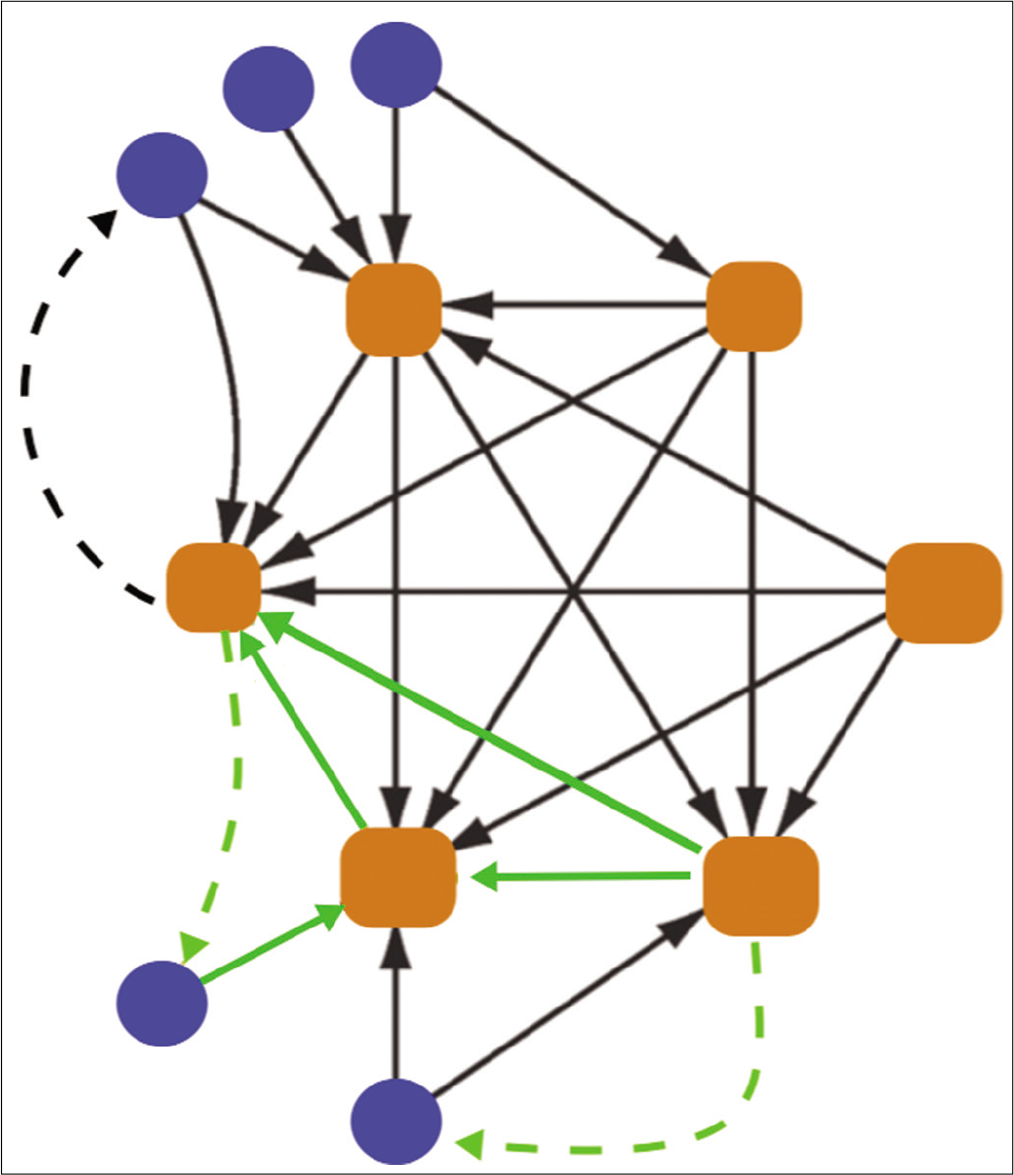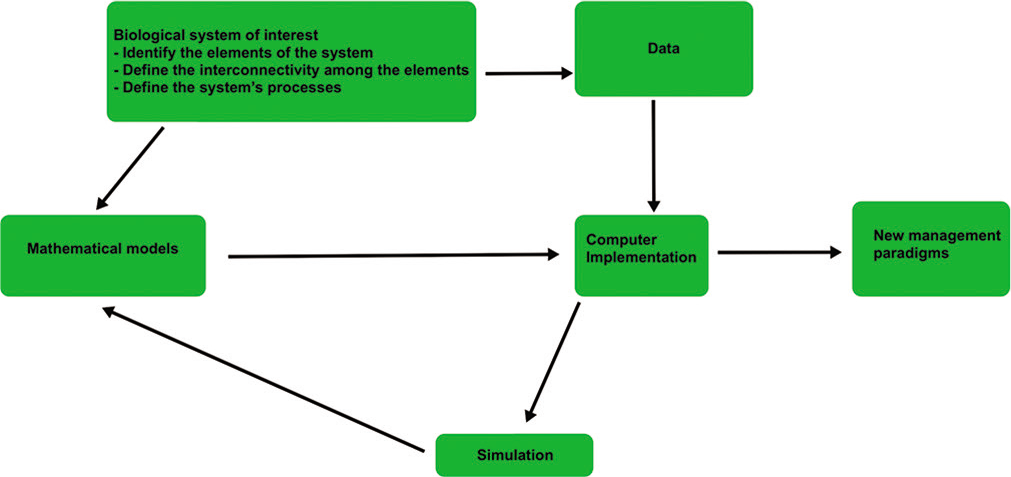- Department of Neurosurgery, University of Washington, Seattle, Washington, United States.
Correspondence Address:
Zaid Aljuboori, Department of Neurosurgery, University of Washington, Seattle, Washington, United States.
DOI:10.25259/SNI_429_2021
Copyright: © 2021 Surgical Neurology International This is an open-access article distributed under the terms of the Creative Commons Attribution-Non Commercial-Share Alike 4.0 License, which allows others to remix, tweak, and build upon the work non-commercially, as long as the author is credited and the new creations are licensed under the identical terms.How to cite this article: Zaid Aljuboori. Overview of the modeling of complex biological systems and its role in neurosurgery. 30-Aug-2021;12:433
How to cite this URL: Zaid Aljuboori. Overview of the modeling of complex biological systems and its role in neurosurgery. 30-Aug-2021;12:433. Available from: https://surgicalneurologyint.com/surgicalint-articles/11076/
Abstract
Biological systems are complex with distinct characteristics such as nonlinearity, adaptability, and self-organization. Biomedical research has helped in advancing our understanding of certain components the human biology but failed to illustrate the behavior of the biological systems within. This failure can be attributed to the use of the linear approach, which reduces the system to its components then study each component in isolation. This approach assumes that the behavior of complex systems is the result of the sum of the function of its components. The complex systems approach requires the identification of the components of the system and their interactions with each other and with the environment. Within neurosurgery, this approach has the potential to advance our understanding of the human nervous system and its subsystems.
Keywords: Biomedical, Complex, Neurosurgery, System
Biological systems are complex adaptive systems and consist of a large number of interacting elements [
Biomedical research has helped in advancing our understanding of certain aspects of the biological systems of the human body but failed to explain their behavior. This failure can be due to the use of the deterministic (linear) approach, which has limitations such as reducing the system to its components before studying it. This reductionist approach assumes that the behavior of a system is the sum of the function of its components, which represents a major flaw because the behavior of complex systems results from the interaction of their components with each other and with the environment. Furthermore, complex systems are far from equilibrium, and their behavior is closely related to the continuous interaction between order and chaos.[
A model is a description of a system in terms of structure and relationship between its elements. Modeling of biological systems requires dealing with the complexity portended by the essential characteristics of living matter. It goes beyond simple verbal reasoning and might help to answer questions that the reductionist approach failed to address.[
Mathematical models of a biological system can be constructed at a microscopic and or macroscopic scale. The microscopic depiction of a biological system is far more complex than that of a physical system of inert substance. Moreover, a biological system cannot simply be observed and interpreted at a macroscopic level because it shows only the output of the collaborative and orderly behaviors that may not be apparent at a different scale.[
The microscopic type models the dynamics of interactions between individual elements of a system. This approach generates complexity that sometimes cannot be addressed properly. Also, the large number of elements leads to a large number of equations, which requires large computational power for their numerical solution, rendering the approach too burdensome. For example, a sub-cellular scale model deals with the evolution of the physical and biochemical state of a single cell. It involves cell signaling, proteins, and genes, which makes the modeling process extremely difficult as many biological details remain elusive.[
The modeling process can be broken down into construction, tuning, analysis, and evaluation of the model [
The complexity of biological systems arises from the variability and interconnectivity of their elements and the shared behaviors and properties at different levels. Using the modeling of complex systems in the field of neurosurgery will expand our understating of the human central nervous system and its archetypes and enables us to explain its characteristics and forecast its responses to different external stimuli.
References
1. Alemani D, Pappalardo F, Pennisi M, Motta S, Brusic V. Combining cellular automata and lattice boltzmann method to model multiscale avascular tumor growth coupled with nutrient diffusion and immune competition. J Immunol Methods. 2012. 376: 55-68
2. Chen LC, Yeh HY, Yeh CY, Arias CR, Soo VW. Identifying co-targets to fight drug resistance based on a random walk model. BMC Syst Biol. 2012. 6: 5
3. Chitnis N, Hardy D, Smith T. A periodically-forced mathematical model for the seasonal dynamics of malaria in mosquitoes. Bull Math Biol. 2012. 74: 1098-124
4. Ghosh S, Matsuoka Y, Asai Y, Hsin KY, Kitano H. Software for systems biology: From tools to integrated platforms. Nat Rev Genet. 2011. 12: 821-32
5. Hofestadt R, Thelen S. Quantitative modeling of biochemical networks. Stud Health Technol Inform. 2011. 162: 3-16
6. Zhang GL, Khan AM, Srinivasan KN, Heiny A, Lee K, Kwoh CK. Hotspot hunter:A computational system for large-scale screening and selection of candidate immunological hotspots in pathogen proteomes. BMC Bioinformatics. 2008. 9: S19







